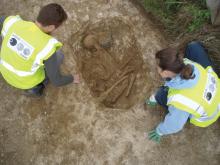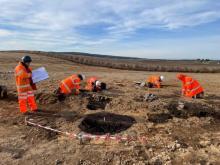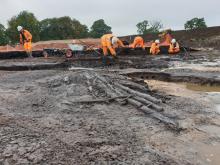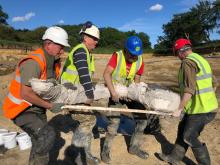Archaeological excavations at
“The age and location of this find suggests that its construction was not as a result of Roman influence,” said Tim Malim, who directed the SLR archaeology team. “It could well indicate that Iron Age Britons were sophisticated road engineers in their own right and had developed the technological expertise to build sophisticated all-weather roadways for wheeled traffic. The road is more than 1.5m high and 6m wide, constructed in three distinct phases and surfaced with imported river cobbles.”
Tarmac estates manager Malcolm Lawer said, “This is an exciting discovery which we understand may change the accepted view that the Romans built the earliest roads in Britain.”
So far 400m have of road have been unearthed and it is thought it may have connected the capital of the Cornovian tribe at the Wrekin with the Old Oswestry hill fort near Oswestry. Archaeologists have discovered evidence of animal dung and dung beetles indicating that prior to construction of the road it had been used in more ancient times as a livestock droveway.









